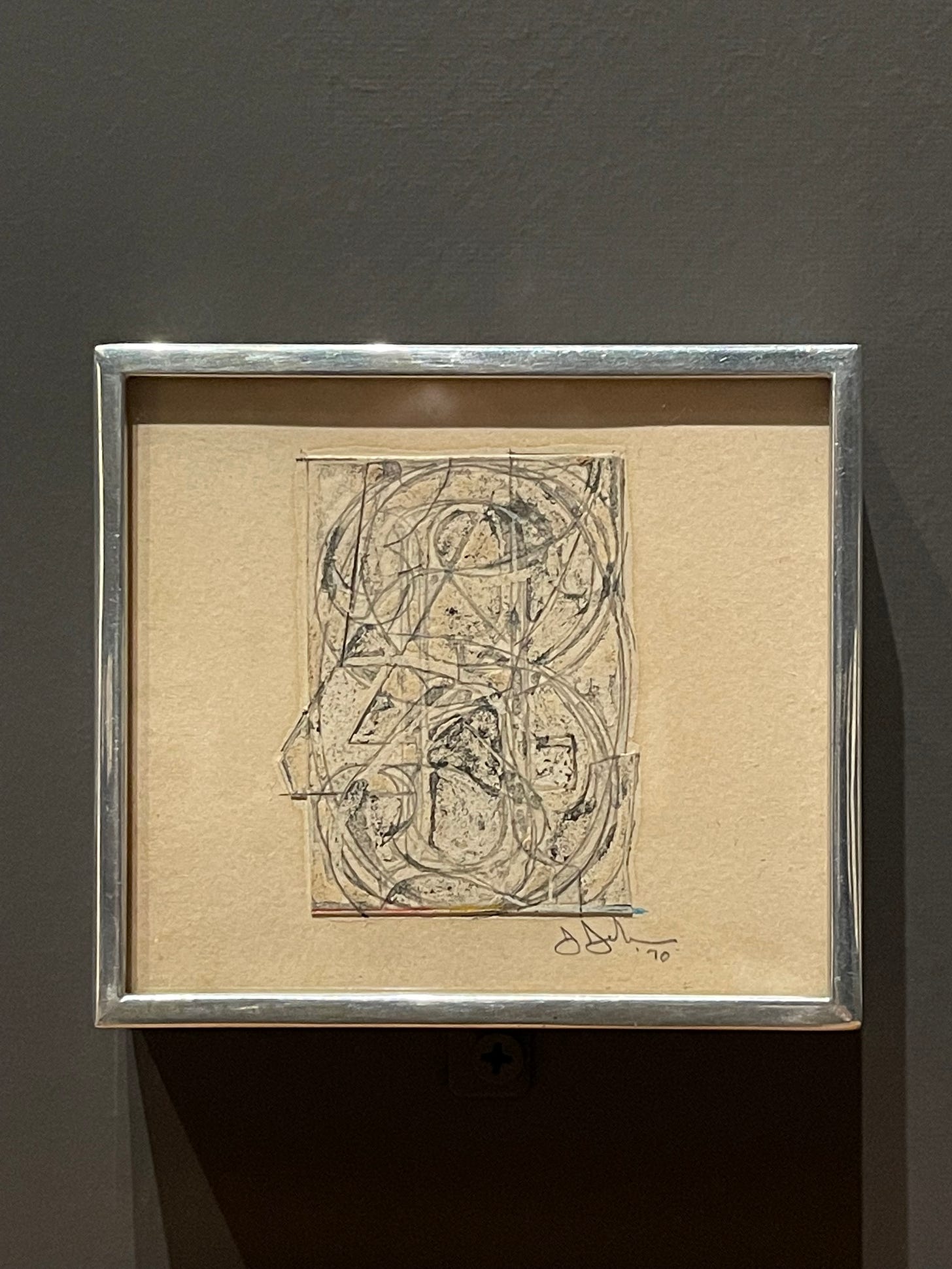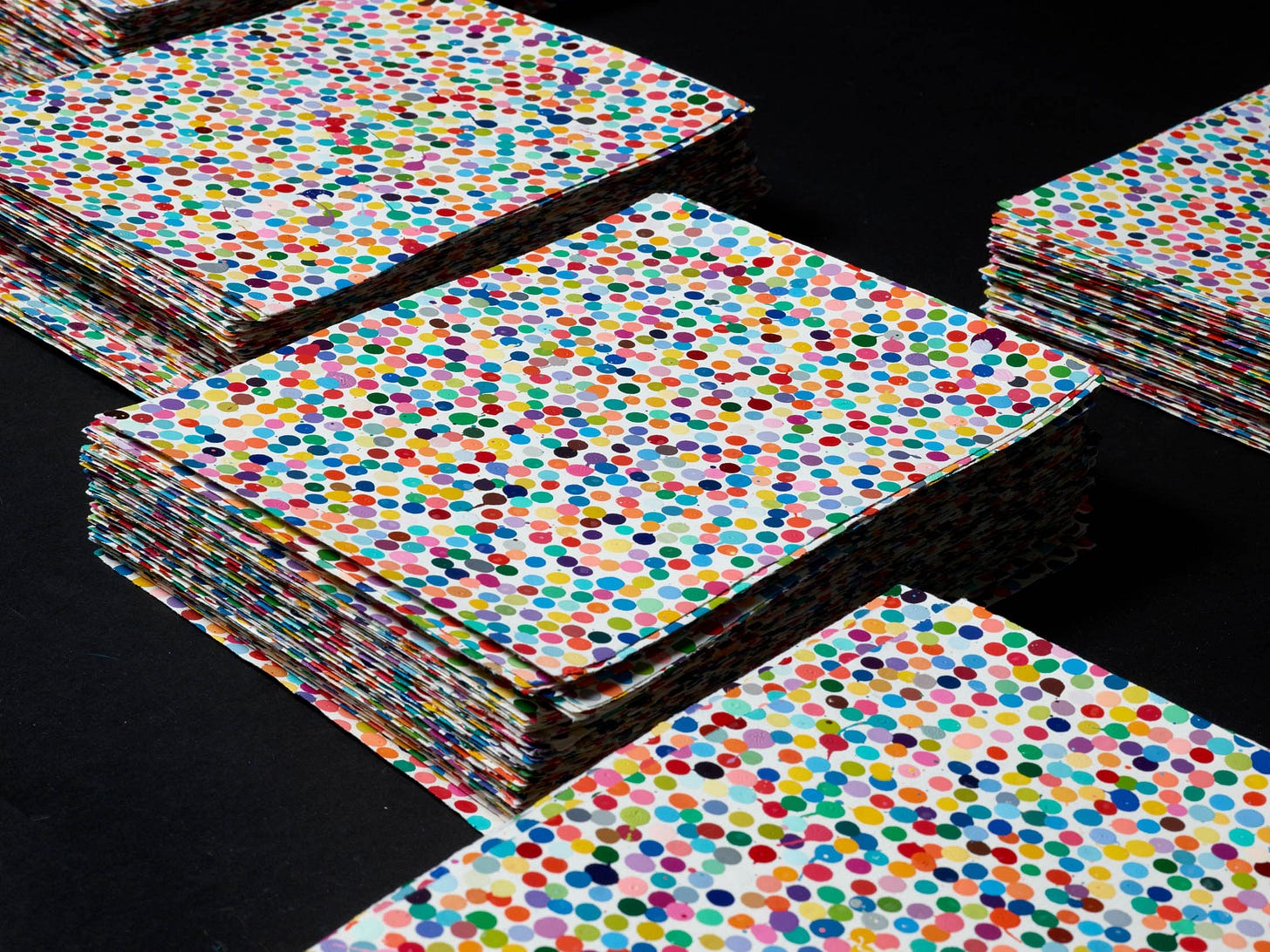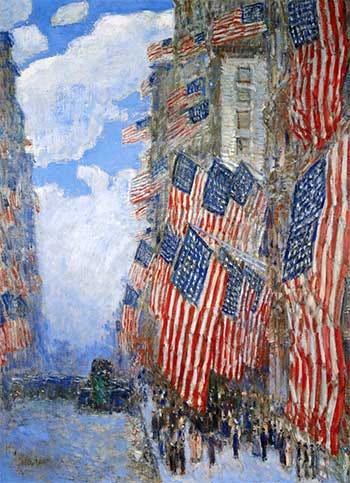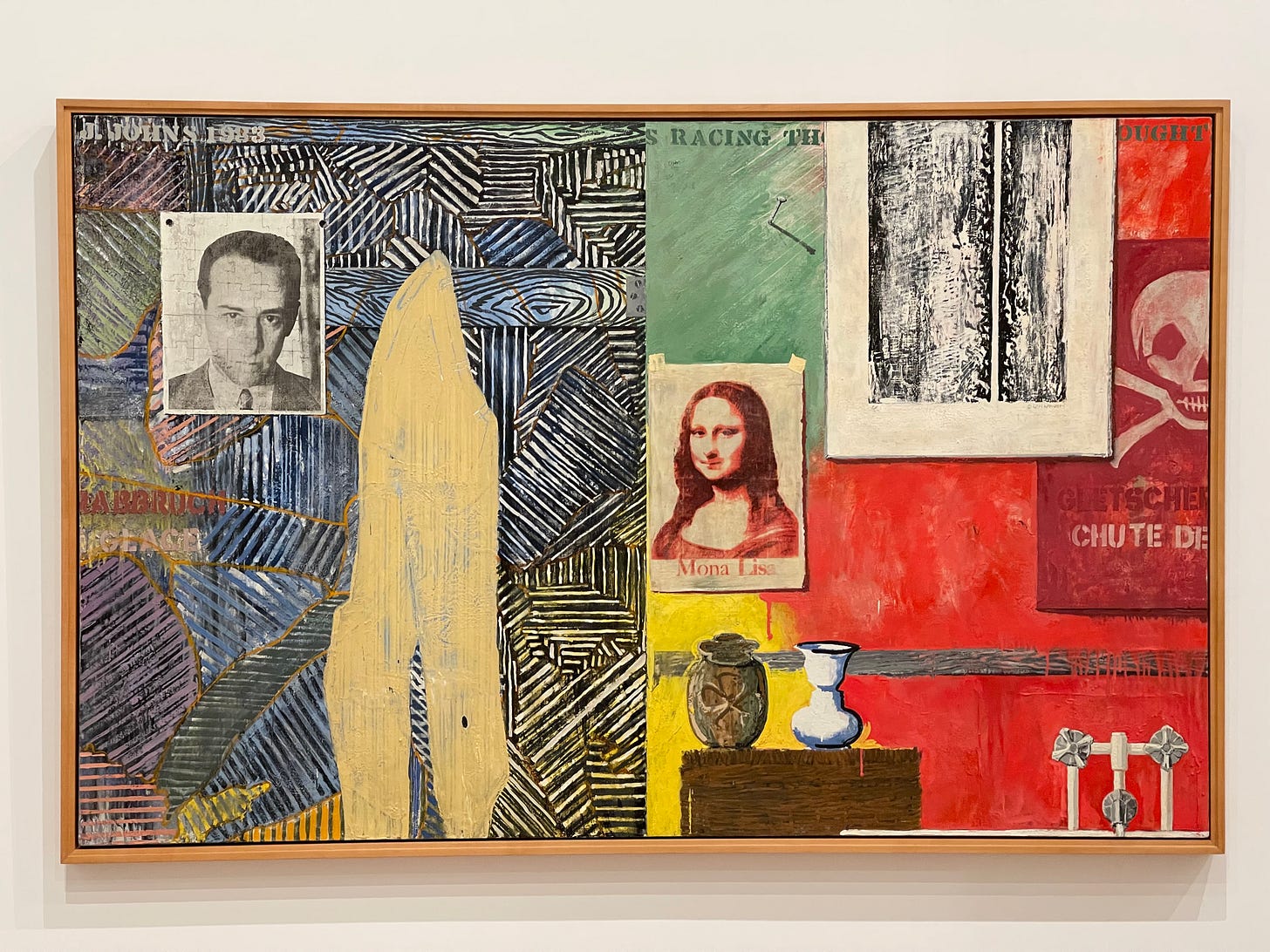Maculate Conception
Thinking about art, ideas and money at the Jasper Johns show.
0 through 9, by Jasper Johns
I’ve been meaning to write about the Jasper Johns show at the Whitney Museum of American Art since I saw it last Sunday. But I just wasn’t able to find the time all week. Now I’m kind of pleased that I waited, because the news has provided me with a more useful jumping-off point than I had previously. To whit:
A Danish museum gave about $83,000 to an artist to reproduce a pair of works displaying the cash, reflecting the nature of work in the modern world.
Instead the artist, Jens Haaning, delivered two blank canvases without a scrap of currency in sight, which are featured in the exhibition that opened last week at the Kunsten Museum of Modern Art. Mr. Haaning concedes that he did almost no actual work on the project after receiving a commission from the museum, in the northern city of Aalborg, but says he is keeping the cash — in the name of art, of course.
“This is only a piece of art if I don’t return the money,” Mr. Haaning said in an interview. “I believe that I have created a good and relevant piece of artwork, which could be hung on the wall.”
I’m kind of charmed by Haaning’s stunt as an exemplary reductio of the already absurd contemporary art world, where rotting bananas can be sold for six-figure sums. Damien Hirst has long been the master of making conceptual art that is fundamentally about the dynamics of the art market rather than anything else, but I think Haaning’s move one-ups Hirst’s recent art-market provocation, “The Currency,” where the purchaser of the work is given both a physical painting and a non-fungible token that points to an image of said painting. The gimmick is that after a year you have to choose which to keep; if you choose the token, the painting is destroyed. That seems like an easy choice—why keep a token that points to an image of the thing rather than the thing itself? But the destruction of the original makes the token—as the sole relic of that painting’s existence, as well as the sole relic of the larger conceptual work that includes the painting’s destruction—far more distinctive than the painting itself, which is, after all, just another Hirst dot painting, “unique” but, you know, kind of not.
The Currency, by Damien Hirst
It’s a clever way to illustrate the absurdity of the way the market ascribes value while making a killing in the bargain. But I think Haaning has put him to shame by simply turning outright embezzlement into an artistic gesture and daring the museum that hired him to say it isn’t—that is, to say it isn’t art.
The commonality between all these art “events” is the notion that art is fundamentally an idea, and that ideas are things that can be owned. It might be argued that part of the idea is the critique of the latter (something worth critiquing since, as I’ve argued before, ideas cannot be property; only physical objects can be property), but I don’t think that’s right. The people who bought Maurizio Cattelan’s rotting bananas didn’t buy the bananas themselves; they bought instructions for reproducing the artwork (using their own banana and duct tape, as well as a wall to tape the banana to), plus a certificate of authenticity stating that they actually paid for this, to distinguish their art from anyone else who might tape a banana to a wall—as anyone could. The piece itself does embody an idea, something about the ephemerality of art, about the relationship between art and jokes (the piece was titled “Comedian” after all), and the metaphor of art as something to be consumed. But it would be a fundamentally different work if it were not for sale—one that took its own joke far more seriously. By selling it, Cattelan seems to me to be trying to have his banana and eat it too.
Comedian, by Maurizio Cattelan
That’s why I like Haaning’s stunt better than the others. He really has put the museum in a bit of a Catch-22. If they sue him, then they are effectively endorsing the message of his gesture, that what the museum was engaged in was commerce rather than art. If they don’t sue him, then they have endorsed that message directly by acknowledging that what he did was a legitimate use of their money, and therefore was art, and since that art consists entirely of the gesture, the gesture must point to a truth. It’s interesting to contemplate whether the blank canvases he delivered would be worth more to collectors if they sued him or if they didn’t; that uncertainty might be the funniest part of the joke of all. But as art, it’s still just an idea, still just a gesture, still just a joke. As Haaning himself said, it’s only art if he doesn’t give the money back. The canvases themselves are just blanks; their only meaning is their relationship to that history. Is that enough to be art?
I’m kind of stubborn in thinking that it isn’t, and the Johns exhibit helped me understand why.
When I was in college, I loved Jasper Johns, specifically the work that made his reputation. I loved the flags, the targets, the numbers, the maps. I felt, on a visceral level, like I got what Johns was doing, that he was taking ideas, abstractions, and turning them into objects, into art. A flag is a specified arrangement of colors; any instantiation as an individual flag is, on some level, itself a representation. If you paint a flag, you’re painting a representation of such a representation. You’re not painting the flag.
The Fourth of July, 1916, by Childe Hassam
But when Jasper Johns paints a flag, he’s not painting a flag or flags (specific objects that exist in space that he is representing) in the manner of the Hassam painting above, nor is he creating a flag, because a flag is not a painting; it’s an object made of cloth designed to be flown from a flagpole. Rather, he’s painting the flag, painting the abstract arrangement of colors that we recognize as the flag. Even if he reverses the colors, or paints it all white, or puts it on an orange background, or puts a series of them one atop the other, the relationship of what he’s painting to flags is complicated and difficult to define, because the flags he’s painting don’t exist in physical space, but only in the realm of abstraction, and that is what he is painting. Same thing with targets, maps, numbers, other bits of text—they may signify, but they aren’t objects in space, but objects in our minds.
Three Flags, by Jasper Johns
There’s a slippery but powerful idea there about the relationship of art to representation. It’s a frontal assault on the Abstract Expressionism that was hegemonic at the time in that it alters our notion of what we mean by an abstraction, reminding us that abstractions can be utterly familiar to us rather than unique products of the artistic process. The flags are also unsettling because it’s not clear what the relationship is of that abstraction to what the flag signifies when it is used properly. I hung a poster of the original flag painting in our common room my sophomore year, and my right wing roommate really liked it at first, but the more he looked at it the more he wondered if it was mocking rather than venerating, and the true answer is there is no answer.
In all of these ways, the art of Jasper Johns is conceptual in nature. But it is not only conceptual. His paintings attack Abstract Expressionism, but they are also examples of Abstract Expressionism, in that the process of creation is painterly and aesthetic but untethered from representation as we usually conceive of it, because the object being represented is itself an abstraction. They are also full of emotion, of joy, melancholy, anger, angst—if you actually let them sit with you, they make you see, and they make you feel. And the specific choices Johns made—for example, the little hints of color that infuse a mostly gray-scale map with hidden life and power—are integral to the impact of the work on both dimensions.
Map, by Jasper Johns
Johns has been called a Dada artist, and there’s a lot of validity to that comparison; he certainly admired Marcel Duchamp, and had similar fascinations with exploding the nature of art and exploring the relationship between word and image. But I don’t think Johns was anti-aesthetic (for that matter, I don’t think Duchamp was either), but deeply invested in the aesthetic impact of his work as well as its signification as gesture. His best work strikes me as simply beautiful, and grows more interesting the more you explore it.
I think that matters. Johns was a conceptual artist, but that doesn’t mean his artworks were just ideas, were just gestures. They were actual works of art, objects in their own right. I’m not making a statement about the important of technique, or of tradition; I’m certainly not saying something about representation. Nor am I saying something about permanence; a sand mandala is certainly a work of art, an object in its own right, but when it’s done, it is wiped away. I’m talking about being an object, about the thing itself, the work of art, being a creation that can be experienced and contemplated as itself, and not merely because of the statement it is making. And yes, I am talking about how much time and attention the engagement with the thing itself, as opposed to the statement, rewards. That thingness, that sense of self that the object manifests, strikes me as absolutely fundamental to art. And I don’t think the banana, or the token, or the blank canvas have it.
Johns’s work of the last thirty years has veered away from large statements about abstraction. His work has become more obviously personal, a public rummaging through the bric-a-brac of his mind by way of meditating on his own mortality. He more frequently played with modes of representation than frontally challenged what representation might mean, made paintings that were collages of signifiers rather than attacks on how we think about signification. They are less radical—but they are no less beautiful, and they still reward attention, still ask us to look, and not just to laugh or to debate.
Racing Thoughts, by Jasper Johns
I came out of the exhibit invigorated, delighted to learn that I still found so much to enjoy and admire in the work of someone I had first encountered so long ago, that it still felt important but also that it still impressed itself upon me as an aesthetic experience, that it still felt like art. And then two flies landed in the ointment.
The first was in the exhibition itself. Right at the start, there’s a room off to the side celebrating Johns’s career and its relationship to the Whitney, the museum that championed his work from early on. I think that room could properly be described as a museum of hype—a magazine cover calling Johns a “Super Artist,” letters to Johns from the head of the Whitney bragging about the monetary value of his work—and I found it deeply depressing. I am not a complete idiot; I do know that art depends on commerce to support it. I am aware that Johns is a superstar in the art world, and I wouldn’t be surprised if, at least some of the time, he derived pleasure from that fact. He has certainly benefitted financially from the market’s appreciation for his work. But though they mostly forget the fact now, museums do not primarily exist to support and structure the art market. They exist to curate: to preserve our artistic heritage and to interpret it for new generations of artists and art-lovers. Their job is to show—and, when necessary, to explain—why the work is worth looking at. I can’t think of how the publicity on display in that room advanced that mission. I can certainly see how it might confuse it, and support the notion that Johns was important because he made a splash and got a lot of publicity, and that therefore new artists that achieve these things, even if they are just playing pranks, are also, by definition, important.
The other was this story, which I read shortly after seeing the exhibit, about how Johns’s latest work, Slice, came to incorporate a drawing by a young immigrant from Cameroon, and whether he committed an offense by doing so, and only asking permission afterward.
Slice, by Jasper Johns
I’m not going to recapitulate all the details and twists of the story; I encourage you to read it for those. But as you read it, think about the relative place and valuation of art and money by the various players therein. Jean Marc, the man who drew the drawing, thought of his art as a process and a gift—a way of dealing with his injury and of showing gratitude to his surgeon (which is how Johns saw it in the first place, because they shared the same surgeon). Johns took it in the same spirit, as he might have taken a photo made a freehand drawing of it as it was in the doctor’s office: an image he encountered that might combine, in his mind, with other images that he could arrange into an object that he would, in turn, give to the world to reflect upon—except, of course, that because he’s Jasper Johns, the world is going to have to pay for it (even if the money goes to charitable purposes). And because Johns has the power to command that kind of payment, the moral of the story as written is that Marc shouldn’t have been so giving. He should not think of his work as a gift, and of recognition of its aesthetic value as a gift in return, but should think of his work as a product with market value, something he needs to be careful to make sure other people aren’t profiting from without compensating him properly.
I understand everything Johns’s critics are saying about the power dynamics between him and Marc. I’m not trying here either to endorse their view of those dynamics or to refute it, to condemn or defend Johns for the specifics of how he used Marc’s work. I also know that art requires commerce, and I don’t approve of exploiting artists. But granting all of that, I still think it’s lovely that Marc thought of his art the way he did, as a gift, and I believe that thinking that way is good for art as such. I also think it’s wonderful that Johns, at 91, still goes about looking at the world as he does, seeing the artistic value of objects he encounters, whatever those objects are, aiming to make art out of them without fretting about whether he may or he ought, and that this is also good for art as such. The posited alternative may or may not be sadly necessary to do well in our world, or to bend a recalcitrant world towards something a bit more fair. But it’s bad for art as such.
I feel like I can draw a pretty straight line between the mentality that says “don’t send your doctor an original drawing; it’s too valuable” and the flag Maurizio Cattelan, Damien Hirst and Jens Haaning are flying. And I’m sorry, but I cannot pledge my allegiance to it.









